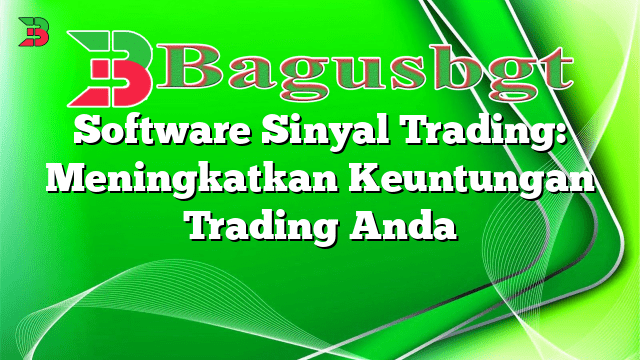Hello, dear readers! In this article, we will delve into the fascinating world of forex trading and explore how it works. Forex, short for foreign exchange, is the largest financial market globally, with trillions of dollars being traded every day. Understanding the mechanics behind forex trading is essential for anyone looking to venture into this lucrative industry.
1. What is Forex Trading?
Forex trading is the process of buying and selling currencies with the aim of making a profit. Currencies are traded in pairs, such as EUR/USD or GBP/JPY. The value of a currency is determined by various factors, including economic indicators, geopolitical events, and market sentiment.
2. The Forex Market
The forex market operates 24 hours a day, five days a week, across different time zones worldwide. It is a decentralized market, meaning there is no central exchange. Instead, trading is conducted electronically over-the-counter (OTC) through a network of banks, financial institutions, and individual traders.
3. Participants in Forex Trading
There are several key players in the forex market. These include commercial banks, central banks, hedge funds, multinational corporations, retail traders, and brokers. Each participant has a unique role and impact on the market.
4. Major Currency Pairs
In forex trading, there are major currency pairs that are the most actively traded. These pairs involve the US dollar (USD) and currencies of other major economies, such as the euro (EUR), British pound (GBP), Japanese yen (JPY), Swiss franc (CHF), Canadian dollar (CAD), and Australian dollar (AUD).
5. Bid and Ask Prices
When trading forex, you will come across two prices: the bid price and the ask price. The bid price is the price at which you can sell a currency, while the ask price is the price at which you can buy a currency. The difference between the two is known as the spread, which represents the cost of the trade.
6. Leverage and Margin
Leverage allows traders to control larger positions with a smaller amount of capital. It is a double-edged sword that amplifies both profits and losses. Margin, on the other hand, refers to the amount of money required to open a position. Brokers often provide leverage and margin facilities to traders.
7. Market Analysis
Successful forex traders rely on market analysis to make informed trading decisions. There are two primary types of analysis: fundamental analysis and technical analysis. Fundamental analysis involves evaluating economic indicators, news events, and geopolitical factors. Technical analysis, on the other hand, utilizes charts, patterns, and indicators to predict future price movements.
8. Order Types
Forex traders use different order types to enter and exit trades. The most common order types include market orders, limit orders, stop orders, and trailing stop orders. Each order type serves a specific purpose and helps traders manage their positions effectively.
9. Advantages and Disadvantages of Forex Trading
Forex trading offers numerous advantages, such as high liquidity, flexibility, accessibility, and the potential for substantial profits. However, it also carries certain risks, including market volatility, leverage-related risks, and the complexity of global factors influencing currency values.
10. How to Get Started in Forex Trading
If you are interested in getting started in forex trading, here are some steps to consider:
- Learn the basics of forex trading through educational resources, books, or online courses.
- Open a demo trading account to practice trading without risking real money.
- Choose a reliable forex broker that offers competitive spreads, a user-friendly platform, and strong customer support.
- Develop a trading strategy and test it thoroughly using historical data.
- Start trading with a small amount of capital and gradually increase your position size as you gain experience.
- Maintain discipline and manage your risks effectively by using stop-loss orders and proper position sizing.
Conclusion
In conclusion, forex trading is a dynamic and exciting market that offers opportunities for profit. By understanding its mechanics, participants, major currency pairs, analysis techniques, and risk management principles, you can increase your chances of success in this vast financial arena. However, remember that forex trading involves risks, and it is crucial to educate yourself and practice responsible trading.
FAQ
| Question | Answer |
|---|---|
| 1. Is forex trading suitable for everyone? | Forex trading is not suitable for everyone. It requires a certain level of knowledge, risk tolerance, and financial resources. It is important to assess your own circumstances and consult with a financial advisor before engaging in forex trading. |
| 2. Can I trade forex with a small amount of money? | Yes, you can start trading forex with a small amount of money. Many brokers offer micro or mini accounts that allow you to trade with as little as $10 or $100. However, keep in mind that trading with small capital carries higher risks due to the impact of leverage. |
| 3. How much time do I need to dedicate to forex trading? | The amount of time required for forex trading varies depending on your trading style and goals. Some traders actively monitor the market and execute trades throughout the day, while others prefer a more passive approach. It is important to find a trading style that suits your lifestyle and commitments. |
| 4. Can I trade forex on my mobile phone? | Yes, many forex brokers offer mobile trading platforms that allow you to trade on the go. With a stable internet connection, you can access your trading account, monitor the markets, and execute trades directly from your smartphone or tablet. |
Remember to always do thorough research, seek professional advice, and practice responsible trading when venturing into forex trading.
 Bagus Banget Kumpulan Informasi terbaru dari berbagai sumber yang terpercaya
Bagus Banget Kumpulan Informasi terbaru dari berbagai sumber yang terpercaya
